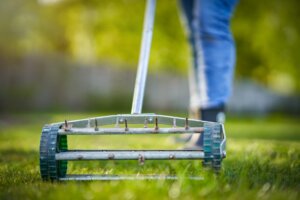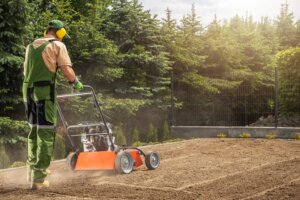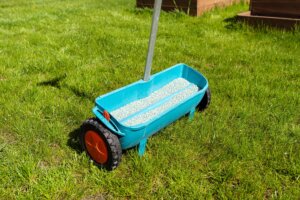Wondering whether to fertilize before or after mowing? Here’s your quick guide to smart, season-ready Pennsylvania lawn care tips that keep your yard green, healthy, and in tip-top shape all year long.
TL;DR: What You Need To Know
- Mow your lawn 1 to 2 days before applying fertilizer for better soil contact and nutrient absorption.
- Wait 24 to 48 hours after fertilizing before mowing again to prevent fertilizer burn and help nutrients settle.
- Adjust your routine each season to match grass growth patterns in Pennsylvania.
- Use a soil test to choose the right lawn fertilizer, whether liquid for quick results or granular for steady feeding.
- Leave grass clippings on the lawn to act as natural fertilizer and keep your yard green with less effort.
Why Timing Matters: Fertilize Before or After Mowing
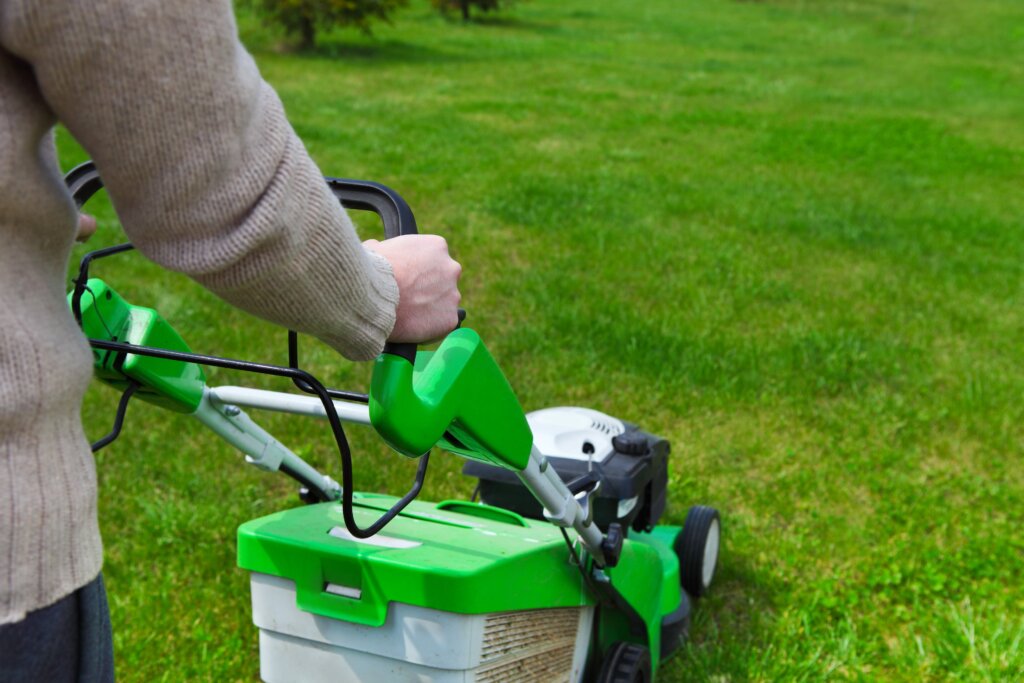
Proper timing when you mow and fertilize ensures your lawn fertilizer is absorbed efficiently and promotes healthy growth. The table below summarizes best practices for Pennsylvania lawns:
| Mowing Timing | Effect on Lawn & Fertilizer |
|---|---|
| Mow Before Fertilizing | Exposes grass blades for better fertilizer reach, prevents dull blades, and supports first spring fertilizer treatment during the growing season. |
| Mow After Fertilizing | Wait 24–48 hours for nutrients to absorb; mowing too soon can cause fertilizer burn, reduce fertilizer effectiveness, and stress the turf’s root system. |
Following these simple steps ensures your plants thrive and your lawn receives the maximum benefit from spring fertilizer treatment and routine fertilizing. For a deeper dive into fertilizer types and timing, see our guide on How to Fertilize Lawn.
Mowing Tips for a Healthy and Beautiful Lawn
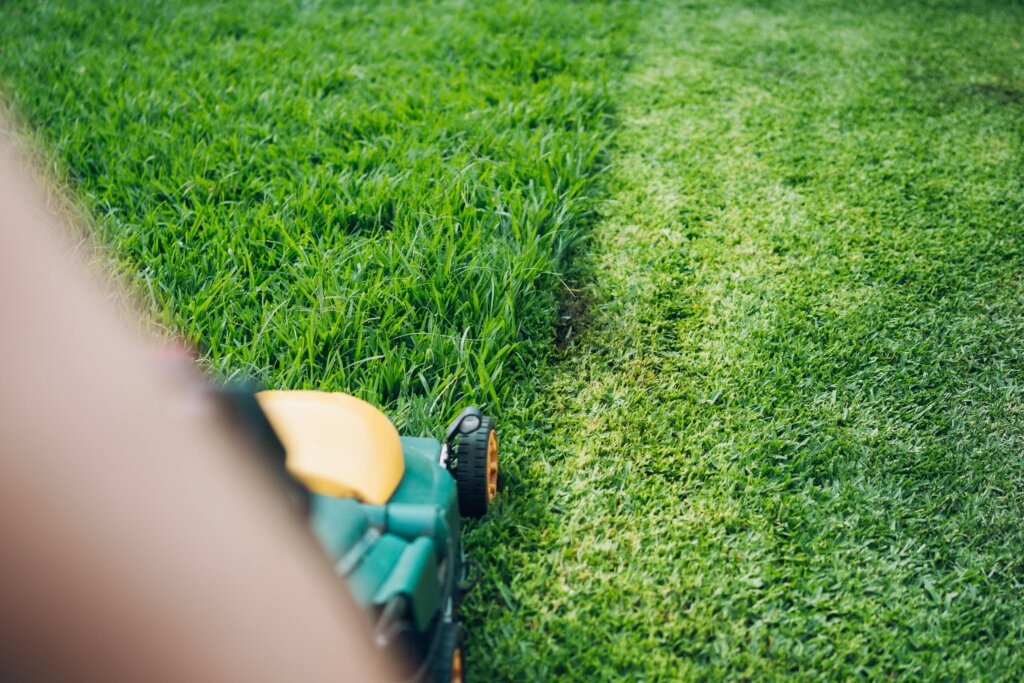
Keep Grass at Optimal Height
Maintain grass at 2–3 inches for most PA lawns. This height supports root growth, helps with weed control, and prevents mowing stress.
Avoid Mowing Wet Grass
Cutting wet grass leads to clumping, an uneven lawn, and excessive lawn waste. Schedule mowing in the late afternoon or after the lawn has dried for the best results.
Leave Grass Clippings
Instead of bagging them, leave grass clippings on the lawn. They act as natural fertilizers, returning nutrients and reducing the need for additional chemical treatments.
Choosing the Right Fertilizer for Your Lawn
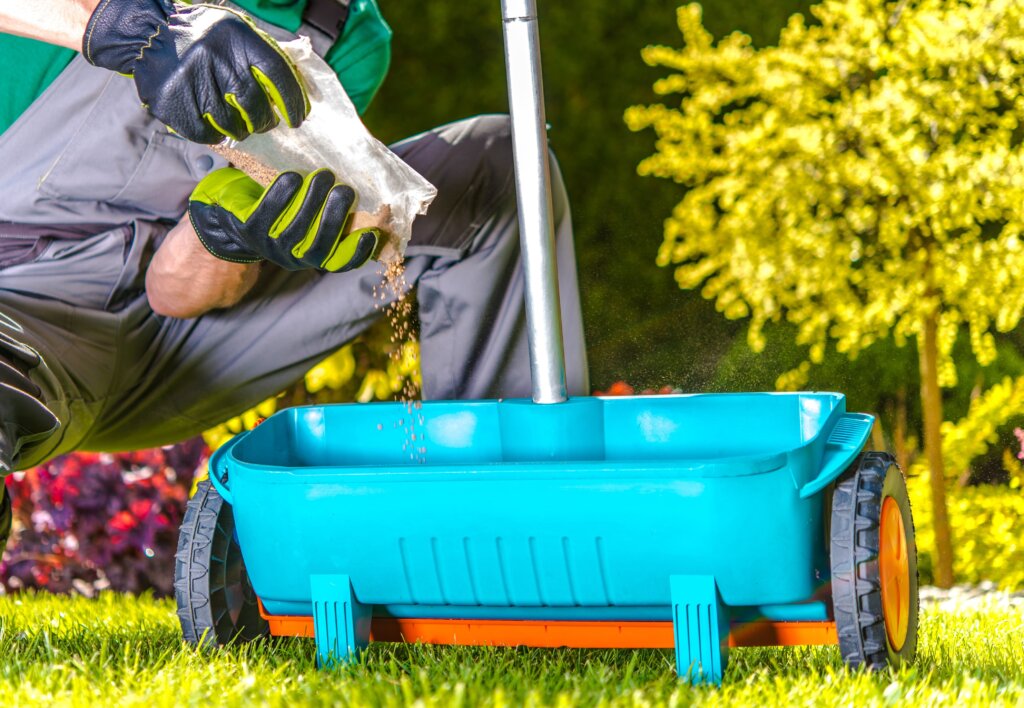
Selecting the right lawn fertilizer is key to a thriving lawn and effective fertilizer reach. Turfgrasses require at least 16 essential nutrients, including macronutrients like nitrogen, phosphorus, and potassium, and micronutrients such as iron and manganese, to maintain healthy growth. A deficiency in any of these nutrients can limit your lawn’s health and vibrancy.
Use the table below to compare fertilizer types for Pennsylvania lawns:
| Liquid Fertilizer | Granular Fertilizer |
|---|---|
| Provides a quick nutrient boost for actively growing lawns; best applied when grass is ready to fertilize your lawn. | Releases nutrients slowly, ideal for first spring fertilizer treatment and regular fertilizer applications; supports healthy growth over time. |
Choosing the right type ensures your lawn receives nutrients efficiently, promoting plants thriving and an evenly green yard.
Starter Fertilizer for New Lawns
For newly planted or overseeded lawns, a starter fertilizer promotes strong root development and long-term health. Learn more about timing and application in our guide on When to Apply Starter Fertilizer.
Seasonal Lawn Care Considerations in Pennsylvania
Adapting your lawn care routine to the changing seasons in Pennsylvania ensures a thriving lawn and healthy grass blades throughout the year.
Early Spring & First Fertilizer Treatment
- Conduct a soil test to identify nutrient needs before applying fertilizer.
- Mow lightly to remove overgrown grass, ensuring fertilizer reaches the soil directly.
- Apply fertilizer after the first mowing when cool-season grasses like Kentucky bluegrass are actively growing to support strong root growth.
Late Spring & Early Summer
- Increase mowing frequency during the growing season to maintain optimal grass height.
- Apply liquid and granular fertilizer strategically for nutrient replenishment; slow-release options help maintain even growth over time.
- Avoid mowing wet grass to prevent uneven cuts and excess lawn waste.
Early Fall
- Fertilize to prepare your lawn for the winter months and strengthen the turf’s root system.
- Maintain slightly taller grass to protect roots during cooler weather and reduce mowing stress.
- Leave grass clippings on the lawn where possible; they act as natural fertilizer and improve soil health.
For expert guidance on proper fertilizer application techniques and timing, see our detailed guide: Fertilizer Application.
Lawn Fertilization Services: Expertise for Your Green Grass
Enlisting the help of a lawn care professional like Terra Lawn Care can streamline your lawn maintenance process.
Advantages of Professional Lawn Care:
- Customized lawn fertilization service for cool and warm season grasses.
- Expertise in fertilizer application and avoiding fertilizer burn.
- Efficient lawn maintenance strategies for a beautiful lawn all year.
Professionals understand the unique needs of different grass types, especially in the Tri-State area’s diverse climate.
Final Thoughts from Your Lawn Care Pro
Maintaining a lush lawn in Pennsylvania requires more than mowing and fertilizing; it’s about strategic lawn maintenance and understanding your grass type. By following the timing tips, using the right fertilizer, and considering seasonal adjustments, you can achieve a healthy lawn year-round.
With Terra Lawn Care’s expert lawn fertilization program, you’ll enjoy a lush, evenly green lawn that stays in top shape all season long. Ready to transform your yard? Contact us today to get started with a lawn care pro who knows how to fertilize your lawn the right way.
Frequently Asked Questions about Fertilizing Before or After Mowing
It’s best to mow your lawn before applying fertilizer. Cutting overgrown grass allows nutrients to reach the soil and root system more efficiently.
After mowing, wait a few days before you fertilize your lawn so the grass can recover and absorb nutrients evenly. This timing helps your yard stay green and in tip-top shape throughout the growing season.
You should mow and fertilize in the right order—mow first, fertilize after. Mowing clears away tall grass blades, helping the lawn fertilizer reach the soil directly instead of sitting on top. Wait at least 24–48 hours after mowing before applying fertilizer for better results and to prevent uneven color or growth.
Always cut your grass before fertilizing. Shorter grass ensures the fertilizer can reach the lawn directly and distribute evenly. Cutting afterward may cause you to lose some fertilizer, especially if you mow too soon. Give your lawn a few days to settle after fertilization before mowing again to protect nutrient absorption.
Yes, mowing before fertilizing helps your lawn absorb nutrients more efficiently. Grass that’s freshly cut exposes more of the soil surface, allowing the fertilizer to penetrate faster. Whether you’re doing your first spring fertilizer treatment or regular lawn fertilization service, this approach supports steady growth and keeps your yard evenly distributed and healthy.

